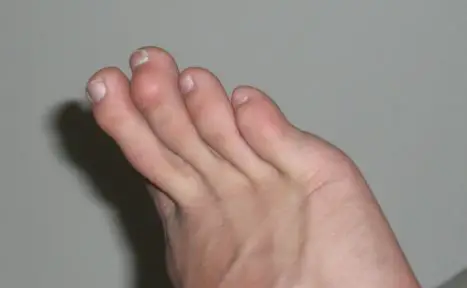
When a person’s toe gets stuck in a bent position, the condition is called a hammertoe. The condition affects the middle joint of the toe and the toe joint experiences a muscle and ligament imbalance. The top of the bent toe experiences irritation and rubbing which makes hammertoes even more uncomfortable. The term hammertoe also applies to what is also known as the baby toe where the toe doesn’t buckle but curls.
The condition can occur in any toe of the foot. Because of gender specific shoe gear, the pain associated with hammertoes is more likely to occur in women than in men. People with poor circulation or diabetes may develop a serious kind of the condition. Hence, the first sign of foot trouble needs to be checked especially when such a condition occurs in people with these conditions.
There are two types of hammertoes:
1. Rigid hammertoes
Rigid hammertoes occur when the joint is pressed out of alignment after the tendons in the toe become rigid. In this condition, the toe becomes immobile and surgery is needed to fix it.
2. Flexible hammertoes
When a hammertoe condition isn’t too severe, the afflicted toe can still be moved though it remains relatively bent and stuck. Several treatment options are available for this condition since it is a milder and earlier form of the problem.
Hammertoes are caused by a number of reasons. If your feet are somewhat unstable, you may have a genetic tendency to develop hammertoes because you may have inherited a foot a high arch or a flat foot. Arthritis is another leading cause though an injury and ill fitting shoes worn for a long time can also cause hammertoes. The toes may be pushed out of balance if shoes are too pointy, too short, too tight or have very high-heels.